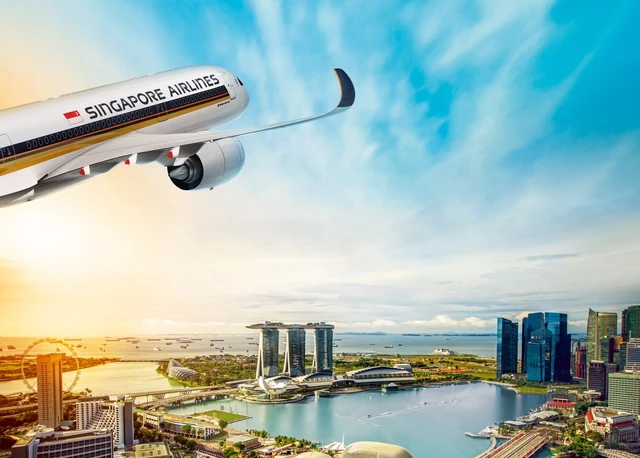
Comprehensive upgrade, ensuring consistency
In a news release on 18 May 2018, Singapore Airlines said more than S$100 million will be invested in the multi-year cabin revamp programme, which will see new lie-flat seats in Business Class and the installation of seat-back in-flight entertainment systems in both Business Class and Economy Class.
This will ensure closer product and service consistency across the SIA Group’s full-service network, the company said.
Aircraft cabin upgrades are expected to start in 2020 "due to lead times required by seat suppliers, including to complete certification processes", according to Singapore Airlines. The merger will take place only after a sufficient number of aircraft have been fitted with the new cabin products.
There will also be transfers of routes and aircraft between the different airlines in the portfolio, which Singapore Airlines said was "consistent with ongoing efforts to optimise the SIA Group’s network".
Singapore Airlines CEO Goh Choon Phong called the announcement a "significant development to provide more growth opportunities and prepare the Group for an even stronger future". The changes will be "positive" for customers, Mr Goh said, adding that it was a major investment to ensure that Singapore Airlines' products and services continue to lead the industry across short, medium and long-haul routes.
Consistent brand position
Mr Goh also said that as the SilkAir brand is not as well known in regions such as Europe compared to here in Asia, the merger will allow SIA to better position the brand in those regions.
“SilkAir has always played a critical role for SIA as a regional feeder. Even with the merger, it won’t detract from that role. However, we believe that with the merger and one single brand, it will make it much easier for customers to understand that both narrow body and wide body (planes) belong to the same organisation and brand."
"That is not to say there is no place for SilkAir," Mr Goh told media and analysts. "In fact there is still a lot of demand for SilkAir type of service specifically on the bigger destinations, bigger cities in Southeast Asia."
He added that with the integration and growth, there should be more opportunities for SIA staff to go into different roles.
"Where there are overlaps, we will look at how to redeploy staff and also how to provide re-training. This is not something new for us, we have gone through mergers between Tiger and Scoot," said Mr Goh.
Jump in profit
The move comes as Singapore Airlines undertakes a three-year transformation programme designed to cut costs and boost revenue amid competition from Chinese and Middle Eastern rivals and low-cost carriers.
The Group's first-half financial report for 2019-2020 shows that SIA achieved a net profit of $206 million in the first half of the financial year, $10 million (+5.1%) higher than last year. Revenue rose $418 million (+5.3%), primarily from strong growth in passenger flown revenue.
Specifically, passenger flown revenue for the Group was up $514 million (+8.2%), lifted by 7.6% growth in traffic. Load factor improved 1.0 percentage point to 84.6%, a record for the first-half, as uplift outpaced the increase in capacity (+6.4%). Notwithstanding the significant capacity expansion, RASK (revenue per available seat-kilometre) continues its upward trend, improving 1.3% to 7.7 cents for the first half, the highest since the commencement of the Group’s transformation programme.
"Upgrading the narrowbody product and folding SilkAir into Singapore Airlines is sensible and was inevitable," CAPA Centre for Aviation Chief Analyst Brendan Sobie said. "The product gap between SilkAir and Singapore Airlines has become too wide."
As part of its transformation programme, Singapore Airlines had already handed some of SilkAir's routes to budget carrier Scoot and merged part of SilkAir's finance team with its parent.
Accordingly, Scoot is to take over a number of SilkAir’s routes during 2019-2020, ahead of SilkAir’s merger into Singapore Airlines. Scoot will also be transferring some of its services to existing destinations served by SIA and SilkAir.
The changes are expected to take place between April 2019 and the second half of 2020. They are the result of a detailed review to identify which airlines in the SIA Group portfolio are best suited to meet evolving customer demand.




















